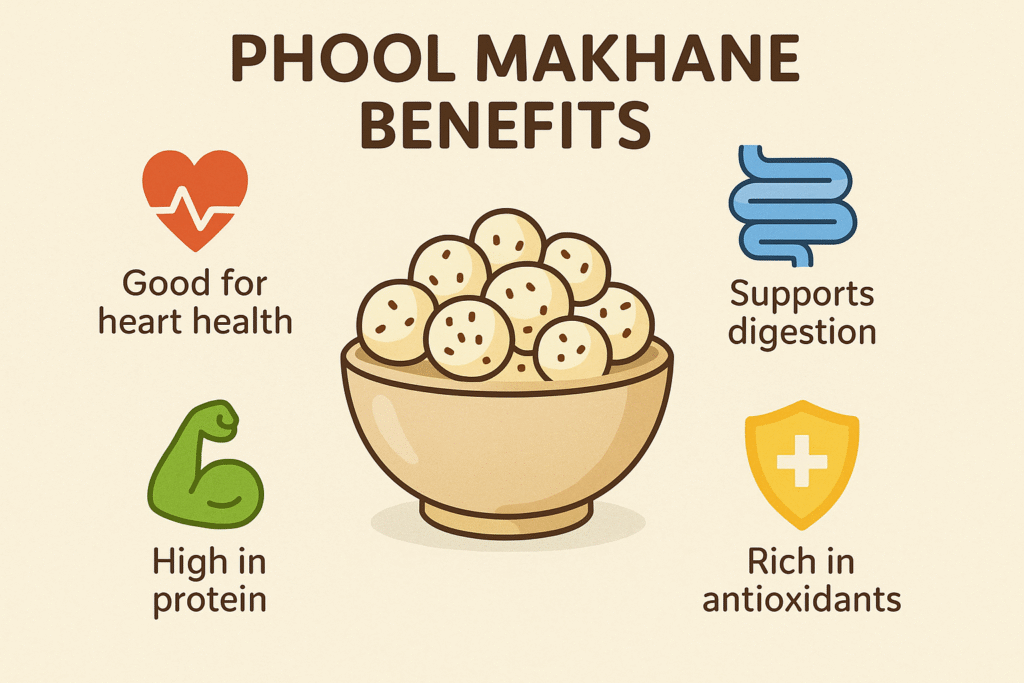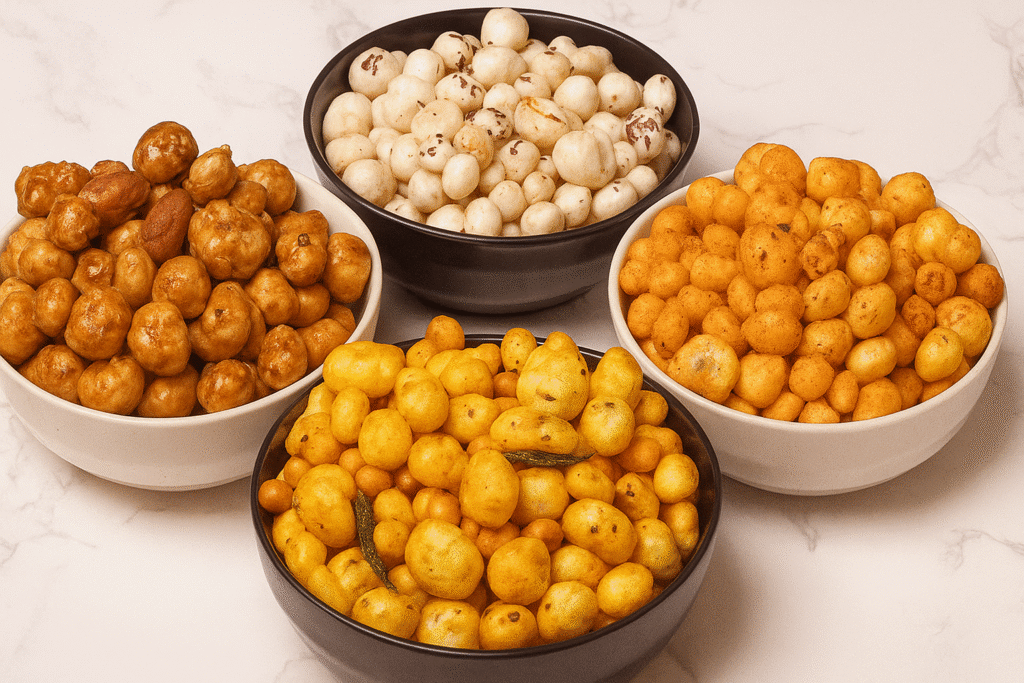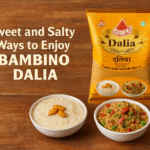Makhane & Me: A Love Story That Started in My Mom’s Steel Dabba
We all have that one snack our moms swore by. For me, it wasn’t chips or chocolates—it was phool makhane, roasted crisp and packed into an old steel dabba lined with newspaper. I’d find it in my school tiffin, next to a roti roll or stuffed paratha, still crunchy even after hours.
I didn’t know then that this light, crunchy thing was a superfood. All I knew was—maa ne diya hai, so it must be good.
And now? Makhane has become my go-to everything—midnight snack, work fuel, festival munchie, even post-gym protein. Turns out, mom was onto something. (As usual.)
🌾 What Exactly Is Phool Makhane?
Phool makhane, also known as fox nuts or lotus seeds, comes from the Euryale Fox plant, harvested from ponds and dried into white, fluffy balls. But don’t let their delicate look fool you—they’re loaded with nutrients and surprisingly filling.
They’re crunchy when roasted, soft when soaked, and neutral enough to soak up any flavour you throw at them—masala, ghee, caramel, or even chocolate (yes, that’s a thing now).
💪 Why Makhane Deserves a Permanent Spot in Your Kitchen
I used to eat it just because mom made it, but here’s why I now keep stock by choice:

💪 High in Protein
Perfect for vegetarians looking for a clean, plant-based protein snack.
⚡ Low in Calories & Fat
Great for guilt-free munching while binge-watching or working late nights.
🥛 Rich in Calcium
Bone health without needing to chug a glass of milk? Yes please.
🧬 Anti-aging Antioxidants
They’re rich in flavonoids, which means good skin, better cell repair, and fewer “tired days.”
🦠 Digestive Friendly
Light on the stomach, makhane helps settle your digestion—and can be eaten during fasts too.
🧪 What’s Inside? Nutritional Facts of Phool Makhane
Okay, let’s get a little nerdy (in a good way). If you’ve ever wondered why your mom kept pushing you to eat makhane, here’s the math behind the magic:
Per 100 grams of Phool Makhane (approximate):
| Nutrient | Amount |
|---|---|
| Calories | 347 kcal |
| Protein | 9.7 g |
| Carbohydrates | 76.9 g |
| Dietary Fiber | 14.5 g |
| Total Fat | 0.1–0.5 g |
| Calcium | 60 mg |
| Iron | 1.4 mg |
| Magnesium | 67 mg |
| Potassium | 500 mg |
| Phosphorus | 180 mg |
✅ Low in fat
✅ High in fiber
✅ Packed with plant protein
✅ Rich in essential minerals like magnesium and potassium
So whether you’re fasting, dieting, gymming, or just snacking smart, makhane quietly ticks all the boxes—without any drama or marketing fluff.
This update flows seamlessly with the rest of the blog. Let me know if you’d like the nutritional table turned into an infographic for social sharing or email campaigns!
🍳 How I Eat It (And You Should Too)
There are so many ways to enjoy makhane, but here are my ride-or-die favourites:

1. Roasted Masala Makhana
A quick toss in ghee + a pinch of salt, pepper, and chaat masala = instant munch magic.
(Perfect for Netflix + chai.)
2. Makhane Ki Kheer
Boil milk, add roasted crushed makhane, sugar, and a few saffron strands.
The taste? Like old-school festival vibes in a bowl.
3. Makhana Trail Mix
I mix roasted makhane with almonds, raisins, and a few dark chocolate bits.
Goes into my office bag every Monday.
4. Caramel or Gur-Coated Makhane
When I want something sweet but not store-bought, this is my hack. Try it once—you’ll never go back to popcorn.
🌸 From Vrats to Vibes: Makhane Is a Mood
Navratri fasts? Makhane.
Bored at 4 PM? Makhane.
Kid wants something crunchy but healthy? Yep—makhane again.
It fits every plate and every generation. And it’s the unsung hero of Indian kitchens—right between sabudana and suji.
🛒 Where I Buy It (Because Not All Makhane Are Equal)
I get mine from Aap Ka Bazar, because they source clean, crisp, premium-quality makhane—none of that chewy, half-popped stuff. Here’s what I usually pick:
- Phool Makhane Premium (250g) – Great for everyday roasting
- Phool Makhane (1 KG) – For gifting or festive cooking
- Flavoured Makhane – Peri peri, pudina, or ghee-roasted for those no-cook snack days
Plus, it’s all delivered to your door. So you don’t have to go sifting through supermarket shelves next to the chips section.
💬 Final Crunch: Why This Simple Snack Still Rules
In a world of protein bars and fancy health snacks, phool makhane stands tall—simple, traditional, and 100% Indian.
It’s the kind of snack that shows up in your tiffin as a kid, in your pantry as an adult, and in your fasting thali during festivals. It doesn’t need a label like “superfood.” It already is one.
So next time you’re looking for something light, crunchy, and secretly good for you—skip the imported almonds.
Grab that steel dabba. Fill it with roasted makhane.
And thank your mom. 💖
🌿 Still Curious About Traditional Indian Superfoods?
If phool makhane brings back memories, wait till you discover Chhuhura—a dry fruit your dadi probably stocked, but you’ve totally overlooked.
👉 Dive into our blog on Chhuhura: The Ancient Indian Dry Fruit You’re Probably Ignoring (But Shouldn’t) and bring a forgotten powerhouse back into your kitchen.



